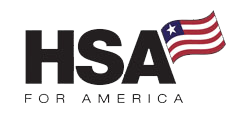The rising cost of healthcare is a growing concern for employees and employers alike, impacting access to care and workplace productivity.

Employee health benefits are critical to attracting the best employees and to keep them healthy and productive at work.
But too often, a poorly designed benefits plan still leaves workers struggling to afford routine healthcare. And many times, workers wind up skipping the healthcare they need. This leads to poor morale and engagement, high absenteeism and presenteeism costs, high turnover, and the need to treat even more expensive and dangerous health problems down the road.
Even with a traditional health insurance plan, workers still face significant obstacles when it comes to healthcare access. High deductibles, copays, coinsurance, prescription drug costs, and the need to take time off work to wait at a clinic all combine to block employees from seeing a doctor when they need to.
It simply costs more than they can afford to go see a doctor.
The Affordability Gap
Traditional group health plans can do a good job of covering major and catastrophic costs.
However, high deductibles, copays, and coinsurance costs still provide a significant barrier to care – particularly for lower-income workers and parents of young children.
Lost time off work can be a factor, as well. Many workers already living paycheck-to-paycheck can’t afford to take a half-day or full day off to spend in a clinic or hospital waiting room.
This means skipped medical appointments, skipped medications, and medical problems that grow worse and worse over time while remaining undetected.
You can get away with it for a while. But you’re just kicking the can down the road. Eventually, the lack of preventative care or the failure to manage chronic conditions shows up in the form of absences, hospitalizations, high utilization costs, and higher premiums.
This is bad for employees, and bad for your business.
In this article, you will find useful tips on how to bridge that affordability gap and help your workers afford to get the care they need and deserve. Here is how you can design a health plan that your employees can actually use.
Compare Pricing on the Best Insurance Plans Available
The High Cost of Healthcare
Increasing healthcare expenses have emerged as a significant obstacle for many employees.
Recent studies reveal that a considerable number of workers are either delaying or entirely forgoing essential medical treatments because of the associated costs.
According to the Kaiser Family Foundation, a striking 25% of Americans have postponed or avoided medical care due to financial constraints.
The situation is even more alarming for lower-wage workers, with as many as 50% stating they are unable to afford their deductibles or co-pays.
This trend not only compromises individual health outcomes but also has repercussions for overall workplace productivity and employee morale.
Obstacles to Care
Lower-wage workers, especially, have some very significant obstacles to overcome even to seek the most basic primary care services.
- High Deductibles. Many must come up with hundreds or even thousands of dollars out-of-pocket in deductibles and other costs before their health plan will pay a cent.
- Cost of Services. Routine services such as check-ups, preventive screenings, and prescription medications can be prohibitively expensive for low-income workers.
- Mental Health Services. Access to mental health care is often limited by cost, leading to untreated conditions that can affect work performance and personal well-being.
Over time, this results in conditions like diabetes, high blood pressure, anxiety, and depression going unmonitored and untreated. If the workers have families, it can mean children are home sick from school more frequently.
All of these things have follow-on effects that affect productivity in the workplace.
Costs to Employers
Ultimately, employers that fail to bridge the healthcare affordability pay a very heavy cost.
This cost comes in multiple forms:
1. Absenteeism and Presenteeism
A comprehensive study found that the monetary value due to absenteeism was $520 per person per year (11% of total health-related costs), while presenteeism accounted for $3,055 per person annually (64% of total health-related costs) (CDC Study, Harvard Business Review, PMC Study).
Absenteeism occurs when sick employees stay home, leading to lost workdays and decreased productivity. The cost of absenteeism due to chronic diseases and health risk factors can be substantial, with employers incurring these costs through lower productivity.
Presenteeism, where employees come to work despite being unwell, is an even more significant issue. It costs U.S. employers $1,500 per employee annually, according to a Harvard Business Review analysis. Studies show that presenteeism costs employers two to three times more than direct medical care.
2. Chronic Conditions
The Centers for Disease Control (CDC) reports that chronic conditions like diabetes, heart disease, and obesity drive as much as 75% of national healthcare spending.
When health issues like high blood pressure go untreated for too long, they lead to more severe conditions like heart attacks or strokes.
These, in turn, require expensive hospitalizations and sometimes surgeries. Eventually, these costs show up as higher premiums for your company: Health insurance companies routinely factor your group members’ actual claims experiences when they set your premiums from year to year.
The sicker your workforce, the higher your group health insurance premiums will likely be, on average.
3. Workers’ Compensation Insurance
Employees experiencing untreated health issues are more prone to workplace accidents and injuries.
For example, a worker struggling with untreated diabetes may experience vision problems or fatigue, increasing the likelihood of errors or accidents on the job. These incidents jeopardize employee safety. In turn, they also drive up workers’ compensation premiums for employers.
Moreover, chronic pain or mobility issues left unaddressed can lead to long-term disability claims, which further strain workplace resources. By providing access to affordable and proactive healthcare options, employers can reduce the frequency and severity of these claims. This fosters a safer and more productive workplace.
4. Turnover and Recruitment Costs
Employee dissatisfaction with health benefits plays a significant role in turnover.
According to a MetLife report, employees dissatisfied with their benefits are 2.5 times more likely to leave their jobs. This dissatisfaction can stem from inadequate coverage, high out-of-pocket costs, or limited access to necessary care.
Turnover is expensive—replacing an employee can cost anywhere from 50% to 200% of their annual salary, factoring in recruitment, training, and lost productivity. High turnover also damages team morale, further affecting productivity.
On the other hand, robust healthcare benefits are a key tool for attracting and retaining top talent. Companies with comprehensive health plans often see higher employee satisfaction and loyalty, saving money in the long run.
Employees dissatisfied with their benefits are 2.5 times more likely to leave, per a MetLife report. Replacing a worker can cost up to twice their annual salary.
Prevention Is Key
Preventive care, like annual physicals, vaccinations, and screenings, costs significantly less than emergency care or advanced treatment.
A flu shot, for instance, might cost $40, but treating complications from influenza could lead to thousands of dollars in hospital bills. And a major flu outbreak can have significant costs to your company. It can significantly disrupt your operations and your ability to take care of your customers and clients’ needs.
Studies show that businesses that invest in preventative measures like a flu vaccination program can realize strongly positive real rates of return.
How To Bridge the Affordability Gap
Connecting employees with the healthcare services they need at an out-of-pocket cost they can afford is a challenge for nearly all employers.
Fortunately, employers have many tools to help close the affordability gap and stay healthy and productive.
Here are some of the tools you can consider employing to make healthcare affordable for your employees:
1.) Traditional Group Health Insurance
Most employers choose to offer a traditional group health insurance plan – in most cases, an HMO or PPO.
These traditional plans do a very good job of protecting beneficiaries against large and catastrophic medical costs. But they are also very expensive for employers and employees alike. And offered by themselves, they still leave workers with a significant affordability gap: It simply costs more money to see a doctor than workers can afford.
2. Health Savings Accounts + High Deductible Health Plans
High-deductible health plans (HDHPs) are simply traditional health insurance plans with higher-than-normal deductibles.
This helps keep premiums lower and more affordable for employers and their workers.
However, the higher deductibles can be a barrier to care for some households.
That’s where a health savings account can come in.
Health savings accounts (HSAs) are special accounts that workers covered under HDHPs can contribute pre-tax dollars to. Contributions grow tax-deferred as long as they remain in the account, and withdrawals from HSAs to pay for qualified medical expenses are tax-free!
This means significant overall savings for workers who need care. The money in an HSA can offset the higher deductibles of an HDHP. It also helps for copays, coinsurance costs, prescription drugs, durable medical equipment, and even medically-necessary travel and home modifications.
Employers also benefit, because HSA contributions via salary reduction via a Section 125 cafeteria plan are exempt from payroll taxes, as well as state and federal income taxes.
Employer HSA Contributions
Important: Lower-wage workers and workers living from paycheck to paycheck may have a hard time contributing to HSAs, and thereby realizing the substantial tax benefits of health savings accounts.
But you can contribute directly to your workers’ HSA accounts as an employer.
Employer contributions are fully tax-deductible as a compensation expense, and non-taxable to your employees.
Your employer contributions can go a long way toward bridging the affordability gap. With money in their HSA, your workers can afford to see a doctor or pick up the drugs they need at the pharmacy. So they can stay productive and focused at work.
This is a win-win for your company and your workers, alike.
HSAs and HDHPs At a Glance
| Feature | High-Deductible Health Plans (HDHPs) | Health Savings Accounts (HSAs |
|---|---|---|
| Definition | Health insurance plan with lower premiums but higher deductibles. | Tax-advantaged savings account paired with an HDHP. |
| Eligibility | Must meet HDHP requirements (see deductible limits below). | Must be enrolled in an HDHP; cannot have other health coverage (some exceptions apply), be on Medicare, or be claimed as a dependent. |
| Minimum Deductible (2025) | $1,650 for individuals; $3,300 for families. | N/A |
| Out-of-Pocket Maximums (2025) | $8,200 for individuals; $16,400 for families. | N/A |
| Premiums | Lower monthly costs due to higher deductibles | N/A |
| Tax Advantages | Group premiums deductible to employers. Benefit not taxable to employees. | - Contributions are tax-free. - Investment earnings are tax-free. - Withdrawals for qualified medical expenses are tax-free. |
| Contribution Limits (2025) | N/A | $4,300 for individuals; $8,600 for families. Additional $1,000 for individuals aged 55+. |
| Qualified Expenses | Coverage kicks in after deductible is met. | Hundreds of potential qualified medical expenses (see IRS Publication 502). |
| Portability | N/A | Funds belong to the account holder and roll over annually. |
| Investment Options | N/A | Many HSA custodians offer investment options for long-term growth. |
| Pros | - Lower monthly premiums. - Encourages proactive healthcare spending. | - Triple tax advantages: contributions, growth, and withdrawals. - Long-term savings potential. - Funds are independent of employment. |
| Cons | - Higher upfront costs for medical services. - Some with significant healthcare needs may be better off in a low-deductible plan. | - Requires enrollment in an HDHP. Only benefits those who contribute, or who benefit from employer HSA contributions |
3.) Supplemental Health Benefits
These supplemental health benefits are a valuable addition to an employer’s offerings, enhancing both access to care and financial security for employees.
They are optional add-ons to a major medical plan that provide targeted coverage and support in areas that standard health insurance plans may not fully address. Here’s a closer look at some key options and their advantages:
Hospital and Accident Insurance
This provides financial support when employees face unexpected medical events, such as accidents or hospitalizations.
These plans typically offer lump-sum payments that can be used to cover out-of-pocket costs like deductibles and copays. They’re also useful for paying for non-medical expenses, such as transportation, lodging, or childcare during recovery.
Your workers can use the lump sum for any purpose. By reducing the financial strain of sudden health issues, these benefits offer peace of mind. They allow employees to focus on their recovery rather than worrying about finances.
Critical Illness Insurance
This is designed to support employees diagnosed with serious medical conditions, such as cancer, heart disease, or stroke.
Even with insurance, people must still pay significant out-of-pocket costs following a cancer diagnosis, so that makes it critical.
For example, a Center for Disease Control study found that cancer patients pay $16 billion in direct out-of-pocket costs each year. They also suffer an additional $5 billion in lost time and wages.
Critical illness insurance pays a lump sum benefit that the insured can use for any purpose. For example, they can cover deductible and coinsurance costs, pay a caretaker or home health aide, and even pay for travel and lodging costs.
Employees can also use the payout to cover non-medical expenses, such as alternative therapies or home modifications. This ensures workers have the flexibility to address their unique needs during a challenging time.
Pet Insurance
Recognizing the importance of employees’ furry family members, pet insurance is gaining popularity as a supplemental benefit.
These plans help cover veterinary costs for pets, from routine checkups to emergency care. Supporting employees in caring for their pets not only reduces financial stress but also strengthens loyalty and morale.
Employees who feel their personal lives are valued by their employers are more likely to remain engaged and committed.
Additional Considerations
Offering supplemental benefits not only enhances the employee experience but also serves as a strategic advantage for employers.
They demonstrate a commitment to employee well-being, help attract and retain top talent, and provide a comprehensive safety net that supports employees through life’s unexpected challenges.
Employers should regularly assess their workforce’s needs and communicate the value of these benefits to maximize participation and appreciation.
4. Consider Health Sharing Plans
Health-sharing plans offer a cost-effective and more affordable alternative to traditional health insurance.
These plans operate by pooling resources among members to cover medical expenses, typically at around half the cost.
They aren’t run by insurance companies. Instead, health sharing plans operate as voluntary associations of like-minded, health-conscious individuals who agree to help share the medical expenses of fellow members.
No Shared Responsibility Penalties for Small Employers
Offering group health sharing is particularly attractive for smaller employers with fewer than 50 full-time employees or the equivalent.
That’s because smaller employers aren’t subject to any shared responsibility penalties for not offering an Affordable Care Act-qualified group health plan.
Note: Unlike traditional group health insurance plans, health sharing plans aren’t required to take all applicants. Instead, they typically impose waiting periods on new members before costs relating to the treatment of preexisting conditions become fully shareable.
As a result, health sharing plans may not be suitable for some workers who have pre-existing conditions or who have family members who have preexisting conditions.
An HSA for America Personal Benefits Manager can help you go over your roster and determine what benefits or combination of benefits are best suited for your specific workforce.
Make an Appointment with a Personal Benefits Manager Today
5.) Promote Direct Primary Care (DPC)
Direct Primary Care is a membership-based model where employers or employees pay a flat monthly fee for unlimited access to a primary care physician.
This model bypasses traditional insurance models and removes significant cost barriers to workers looking to get the healthcare they need.
Benefits include:
- No Co-Pays or Hidden Fees: Employees can visit their doctor as often as needed without worrying about costs.
- Personalized Care: DPC fosters stronger doctor-patient relationships, improving preventive care and reducing emergency visits.
- Longer appointment times. Appointment times are much longer compared to traditional fee-for-service practices. This means doctors have a much better opportunity to address the root causes of health problems – preventing absenteeism and presenteeism in the future.
- Improved Productivity: With faster access to care, employees recover quicker and miss fewer workdays.
Moreover, with direct primary care, same-day or next-day appointments are routinely available – without having to wait all day in a health clinic.
6.) Embrace Flexible Spending Accounts (FSAs)
Flexible Spending Accounts (FSAs) are employer-sponsored benefit programs that allow employees to set aside pre-tax dollars for eligible medical expenses.
This tax-advantaged arrangement helps workers save money on healthcare costs while reducing their taxable income.
Key Features of FSAs
-
- Pre-tax contributions: Employees can contribute a portion of their salary before taxes are deducted, lowering their overall taxable income.
- Immediate availability: The full annual election amount is available for use at the beginning of the plan year, even if contributions are made gradually.
- Wide range of eligible expenses: FSAs can cover various medical costs, including deductibles, copayments, and certain medical supplies.
Benefits for Employees
-
- Tax savings: By using pre-tax dollars, employees can effectively reduce the cost of their healthcare expenses.
- Alignment of Incentives: The temporary availability of funds encourages workers to seek necessary medical care without delay.
- Budgeting tool: FSAs help employees plan and budget for anticipated healthcare costs throughout the year.
Considerations
-
- Use-it-or-lose-it rule: Typically, FSA funds must be used within the plan year, with some plans offering a grace period or limited carryover option.
- Contribution limits: The IRS sets annual limits on FSA contributions, which may change from year to year. For 2025, the limit is $3,300.
- Employer involvement: FSAs are only available through employer-sponsored plans and cannot be established individually.
While FSAs offer significant benefits, it’s important to carefully estimate healthcare expenses to avoid forfeiting unused funds at the end of the plan year. Employees should also be aware of their specific plan rules and eligible expenses to maximize the benefits of their FSA.
7.) Wellness Programs
We’ve already mentioned the value of onsite or employer-sponsored flu vaccination drives.
But other wellness initiatives have shown potential for delivering powerful direct and indirect ROI for employers, too. Especially over long periods of time.
Examples include:
- Smoking cessation programs
- Offer incentives for completing annual wellness exams.
- Workplace physical activity (for otherwise sedentary employees)
- “Lunch-and-learn” events with local health and wellness experts
- Anti-stress initiatives
- Offering healthier choices at workplace cafeterias
- Weight loss activities
- Gym memberships promote healthier lifestyles, lowering absenteeism and chronic disease risks.
Note: Employers should take care to comply with ACA and other federal compliance rules when implementing a workplace wellness program.
8.) Support Mental Health Initiatives
Mental health is a crucial aspect of overall well-being. Employers can enhance access by:
- Offering mental health days or additional leave for those in need.
- Providing access to counseling services through Employee Assistance Programs (EAPs).
Compare Pricing on the Best HealthShare Plans Available
High Cost of Healthcare Conclusion
Health benefits aren’t just another block on a to-do list.
They’re a strategic investment in your workforce and your business.
Addressing healthcare affordability gaps boosts productivity, lowers costs, and enhances employee satisfaction. By designing a thoughtful benefits package, you can bridge the gap and keep your team—and your business—thriving.
Take the first step today: Contact a Personal Benefits Manager to explore options tailored to your workforce.
For Further Reading:
Read More About Group Health Insurance Options in Your State



